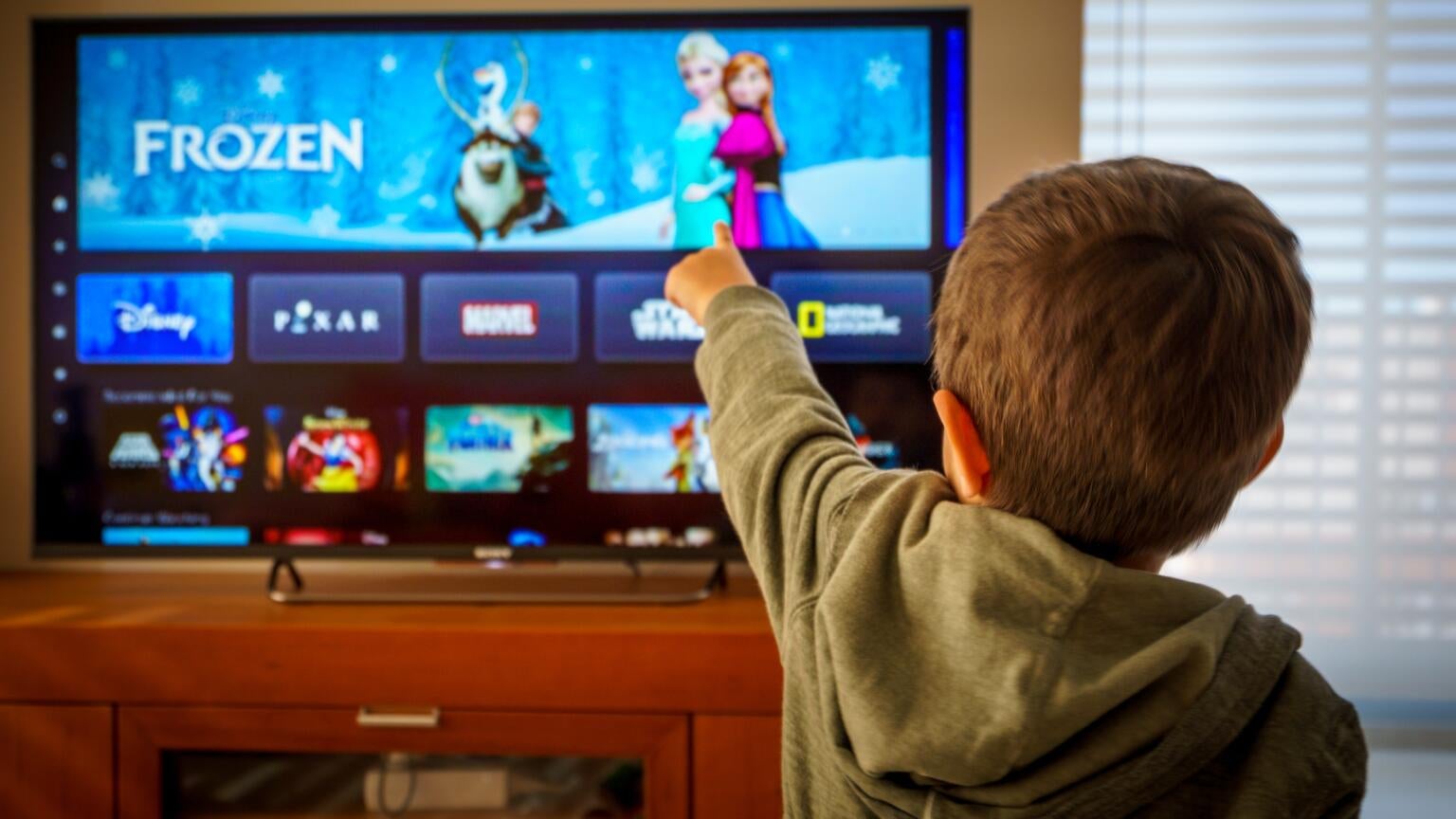Execs: Disney+ Ad-Supported Tier to Have Minimal Ad Load, No Ads on Kids Profiles; All-Streaming ESPN is Coming
Execs: Disney+ Ad-Supported Tier to Have Minimal Ad Load, No Ads on Kids Profiles; All-Streaming ESPN is Coming

Wednesday was a good day for Disney as the company reported that all three of its streaming services grew their subscriber bases over the past quarter, highlighted by Disney+ beating industry projections to add 14.4 million customers from April through June. Collectively, Disney’s three streamers — Disney+, Hulu, and ESPN+ — now total 221.1M subscribers, which eclipses the 220.67M that Netflix reported at the end of Q2.
Get Disney+, Hulu, and ESPN+ for just $16.99 a month ($14 savings).
Of course, there are substantial redundancies in that total as Disney offers a bundle of services, giving customers subscriptions to two or three of the streamers at a discounted rate. Nonetheless, the new total stands as a sizeable achievement in the world of streaming, but that was not the only major news that Disney announced on Wednesday, as the entertainment juggernaut confirmed the launch date and initial pricing for Disney+’s ad-supported tier.
Following the release of the earnings report, Disney executives answered questions from analysts about numerous company-wide topics, including streaming.
Initial Ad Load on Disney+
Disney CEO Bob Chapek told an analyst that when the Disney+ ad-supported tier launches on Dec. 8, that the number of ads will be kept small, at least at first. Back in May during the company’s Upfront presentation, Disney confirmed that it would limit the number of ads to four minutes per hour and that commercials would not appear on children’s programming.
On the earnings call, Chapek explained that the company’s experience with selling and serving ads on Hulu has given execs insight into how best to approach the process. He said that the plan is to start small and increase the number of ads as the situation warrants.
“We’re walking before we run in terms of seeing what the market will bear in terms of ad load,” he said. “We’re going in very conservative up front. But we believe that there’s probably going to be some … elasticity in that as well, as we go forward … We think that by taking a conservative approach, in terms of that ad load up front, it’ll give us the ability to expand if we need to, and not have to go the other way, which I think would be a much bigger deal.”
The company’s CFO Christine McCarthy also confirmed and clarified the plans for commercials targeted toward children.
“There’ll be no ads in kids’ profiles or pre-school [profiles],” she said, “at least at the launch. So, this is going to be done very thoughtfully and looking at the content and also making sure that the advertiser is consistent with the content.”
It sounds as though if Disney ever decides to place ads on children’s programming that it work to guarantee that the content of the ads does not run counter to programming it accompanies. As Disney+ has expanded the number of more mature titles in its library, the service’s profiles and parental controls have become increasingly important, but many parents will likely appreciate knowing that they should be able to turn on Disney+ and not worry about what types of commercials end up in front of their kids.
Churn Concerns from Price Increase
As part of the announcements made ahead of the earnings call, Disney announced a slate of substantial price increases across nearly all of its streaming properties.

Despite the increases, Disney executives did not appear concerned about the potential for customers to cancel their subscriptions because of the price hikes.
“We do not believe that there’s going to be any meaningful long-term impact on our churn as a result,” Chapek said. “We launched at an extraordinarily compelling price across all the platforms … And we believe that we’ve got plenty of price-value room left to go. “
The CEO pointed to the rate increase coming to ESPN+. Last month, the sports streamer announced a 43% price increase beginning on Aug. 23. In the nearly four weeks since the announcement, Chapek indicated that the company had not seen a substantive churn from customers unhappy by the hike.
“One only needs to look at our recent significant increase on ESPN+,” he said, “which had … really no meaningful impact at all on our churn.”
Whether the same will hold true for the much larger Disney+ — which has far more premium competitors than ESPN+ does — remains to be seen. But, the comparison to ESPN+ wasn’t the only in-house comp that the execs made. McCarthy pointed to the company’s general entertainment streamer as another example of why they do not believe that customer totals will decline upon the launch of the new pricing structure.
Disney’s assumption appears to be that if customers are concerned about the rising cost of Disney+ that history shows that they are more likely to opt for the cheaper, ad-supported tier than to cancel altogether.
“Based on our Hulu experience, even current subscribers who have ad-free may choose to stay at the same price point with ads,” she said. “The Hulu ad-supported tier has more subscribers than ad-free; it’s about two-thirds. And that’s something that we can’t anticipate — that we’d have exactly the same behavior — because it’s a different demo that has Disney + versus Hulu, but that’s the best indication we have.”
ESPN as a Standalone Streamer
While rumors are not the same as news (look at the conjecture over HBO Max’s demise ahead of last week’s Warner Bros. Discovery earnings report), but often when C-level executives are fanning smoke signals, flames are not too far behind.
In May, Chapek somewhat surprisingly brought up the idea that a standalone streaming service comprised of ESPN's linear offerings would be the “ultimate fan offering.” Then in June, the network’s chairman Jimmy Pitaro said that while no date had yet been determined for such a service that it was something being discussed.
On Wednesday, Chapek again returned to the topic, giving the most definitive confirmation to date that streaming is the future for all ESPN content.
“What we’re all preparing for is the future of what ESPN would look like in a true direct-to-consumer fashion,” he said. “I think the way we’re looking at this is if we want to proactively prepare for that future without prematurely disrupting the cash flow that we get from the linear networks … we’ve negotiated flexibility into our rights agreements across the board [to include streaming] … We believe there’s tremendous degrees of freedom in terms of what ESPN DTC ultimately looks like. I think we’re very proud of what we’ve done to date on ESPN+, but that in no way limits how we envision what a true ESPN DTC proposition would look like going into the future.”
While the execs continued to decline to give a timetable for this seeming eventuality, it is clear that Chapek and company are actively working towards a future in which everything that ESPN has to offer is available via streaming. Since the network is still generating substantial revenue via cable and satellite carriage fees and broadcast advertising, it might be a while until the worldwide leader in sports completely pivots to streaming, but it is clearly not so far from the realm of possibilities to prevent the company’s leaders from making plans for that inevitability.
Disney+
Disney+ is a video streaming service with over 13,000 series and films from Disney, Pixar, Marvel, Star Wars, National Geographic, The Muppets, and more. It is available in 61 countries and 21 languages. It is notable for its popular original series like “The Mandalorian,” “Ms. Marvel,” “Loki,” “Obi-Wan Kenobi,” and “Andor.”

